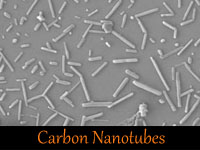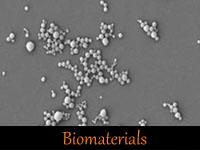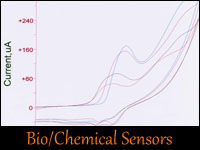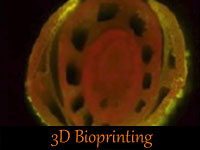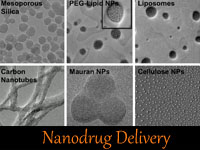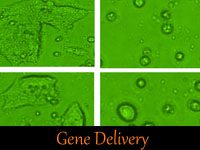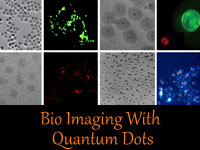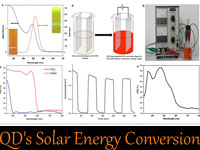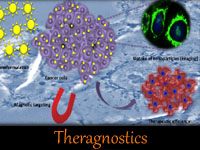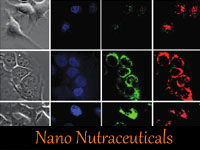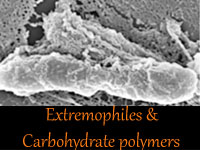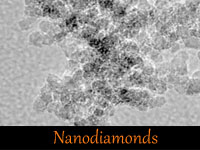


Nanodrug delivery
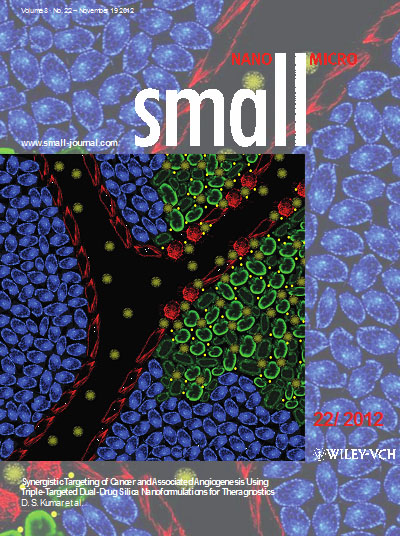 |
| Cover page in Small : Synergistic Targeting of Cancer and Associated Angiogenesis Exercising Triple Targeted-Dual Drug Silica Nanoformulations for Theragnostics. Small (2012) DoI: 10.1002/smll.201200874 |
Nanotechnology has engendered a substantial impact in nearly every aspect of science. Our research seeks novel nanomaterials and nanotechnologies in order to develop cutting-edge drug delivery systems with the promise to improve health care. Highly interdisciplinary, our research is focused on multifunctional, nanoparticle-based drug delivery systems. We seek to improve nanoparticle synthesis and formulation and its therapeutic efficacy. At the same time, we emphasize a fundamental understanding of the interface between nanomaterials and biological systems, all in order to aid in nanoparticle drug development. Some key research features and the outcomes obtained thereof are recited below:
Developing Nanocarriers with Versatile Drug Loads
We are involved in synthesis of versatile biocompatible nanocarriers out of natural polymers, inorganic materials, carbon based materials etc. We have successfully reported the synthesis of various nanosized drug carriers made up of gold, carbon nanotubes, silica, carboxy methyl cellulose, poly-lactide-glycolic acid, gellan gum, zein, liposome-polymer hybrids, mauran etc. These carriers are tailor-made to carry drugs such as curcin-an active anticancerous plant toxin, doxorubicin, curcumin, paclitaxel- hydrophobic drugs, otherwise tough to formulate as aqueous solution and 5-flurouracil, a thymidylate synthase inhibitor. Most of these nanoformulations are utilized for cancer therapeutics whereas some formulations made of PLGA with an active component curcumin was utilized for alzhemier’ therapeutics. Nanocarriers with dual drug loads are also been utilized to overcome drug resistant type cancers cum also to attain highly potent therapeutic index when used in such combinations. So far, we have utilized these nanocarriers for treating cancers such as glioma and neuroblastomas of brain, adenocarcinomas and metastatic ductal adenocarcinomas of breast and epitheliod carcinoma and ductal adenocarcinoma of pancreas. In addition, curcumin loaded nanocarriers are utilized for treating Alzheimer’s and lung disorder like cystic fibrosis. We are now working on improvising the therapeutic index with custom-made nanoformulations. In addition, we are also presently inspecting the molecular outcomes of the nanotherapeutics with an emphasis on bio-nano interactions in vivo.
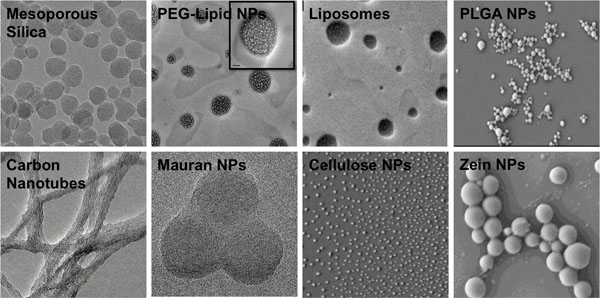 |
Fig.1: Different Drug Delivery Vehicles Synthesized in Our Lab |
Targeting Moieties for Nanoparticle Drug Delivery
Molecules that target biomarkers of a specific disease play an important role in nanoparticle drug delivery. These moieties, used in nanoparticle delivery systems, increase nanoparticle in vivo efficacy and notably affect the biodistribution and pharmacokinetics of the uptake of such particles. We have utilized highly efficient targeting moieties including small molecules, peptides, antibodies, and aptamers. Small molecules such as folic acid and transferrin are used for cancer cell targeting. Aptamer that can efficiently get internalized by cancer cells, AS1411 are utilized for cancer cell targeting whereas amyloid binding aptamer are utilized to target and bind plasma amyloids for treating alzheimer. Antibodies mediated cancer targeting was achieved utilizing anti-Tfr, anti-TEM-7, anti-CD31 etc. Peptides such as Tet-1, anginex, RGD are also been utilized for highly specific targeting of pathologies thus differentiating normal cells from the eye of nanoparticles. Novel simple conjugation techniques were utilized to surface functionalize nanoparticle surface with these targeting moieties. Multiple targeting strategies were introduced to the scientific community by our research team, which increased in multitude, the nanoparticle uptake by cancer cells with lesser to nil non-specific accumulation of nanoparticles by normal tissues. Synergistic targeting approach of various deformities associated with cancer in a single shot is also achieved recently through multiple targeting stratagems. Currently, we are investigating on more of these measures to increase the specificity and sensitivity of these nanoformulations to localized diseased tissue sparing normal cells and the non-specific toxicity and side effects thereof.
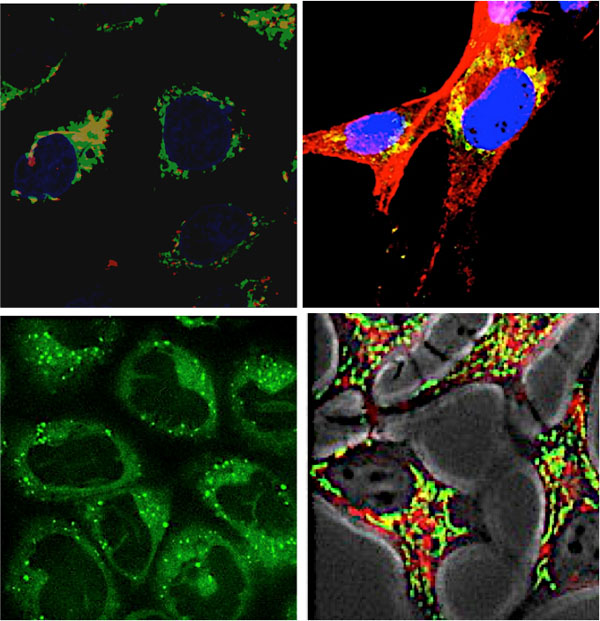 |
Fig.2: Uptake of Drug Loaded Targeted Nanoparticles by Cancer Cells With High Specificity |
Remotely Triggerable Drug Release
The next criterion that we are keen in working with is remotely triggerable release of drugs on demand, which avoids any premature drug release after injection intravenously during blood flow. We have attained very positive results with remotely triggerable drug delivery systems that get activated on chemical or physical cues when in demand. pH sensitive release kinetics, an example of chemical cues guides the release of drug under physiological conditions of normal and tumor cells. When the nanoparticles reach acidic pH, pH of tumor cells, the nanocarriers leaks the drugs out of them enabling efficacy in therapeutic efficacy whereas at neutral physiological conditions, they secure the drugs inside the core avoiding premature release. Magnetically guided drug release are also attained utilizing multifunctional carriers with magnetic field responsive substance that fastens the release of drug on demand at localized site of tumor. Heat mediated release (thermal responsive) of drugs utilizing plasmonic nanostructures, such as gold, copper based nanocrystals etc. are also achieved using multifunctional nanocarriers. In addition, we are also interested and indulged in better understanding of light mediated drug release using light absorbing nanocrystals. When excited, these NCs speeds up drug release on demand. Thus released drug act upon cancer cell’s and kills them precisely. The cancer cell death is monitored to understand the drug delivery kinetics and drug action on cellular organelles.
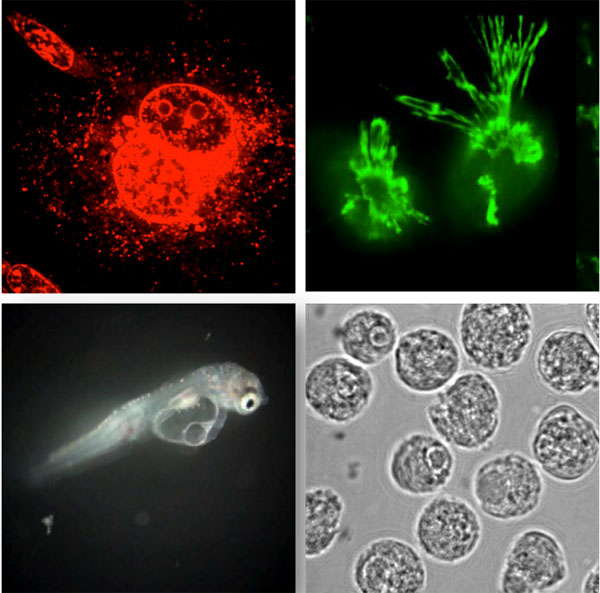 |
Fig.3: Release of Drug and Drug Effects Thereof Post Treatment |
With all this aforesaid, we are currently investigating in detail about the nanoparticle interaction at molecular level. We are also looking on various approaches to prepare high payload drug delivery carriers at nanoscale with on-demand release of drugs. We are also keen in preparing selective and specific treatment strategies. To know what is cooking, please keep an eye on this page.
Articles Published on the above Mentioned Areas:
- Type 1 Ribotoxin-Curcin Conjugated Biogenic Gold Nanoparticles for a Multimodal Therapeutic Approach towards Brain Cancer.
Biochimica et Biophysica Acta - General Subjects (2013)
DoI: 10.1016/j.bbagen.2013.12.020 -
Bacterial exopolysaccharide based magnetic nanoparticles: A versatile nanotool for cancer cell imaging, targeted drug delivery and synergistic effect of drug and hyperthermia mediated cancer therapy.
Journal of Biomedical Nanotechnology (2013)
DOI: http://dx.doi.org/10.1166/jbn.2014.1820 -
Aptamer conjugated theragnostic multifunctional magnetic nanoparticles as a nano platform for pancreatic cancer therapy.
RSC Advances (2013)
DoI: 10.1039/c3ra42645a -
Curcumin and 5fu loaded, folate and transferrin decorated polymeric magnetic nanoformulation: a synergistic cancer therapeutic approach, accelerated by magnetic hyperthermia.
International Journal of Nanomedicine (2013) -
Aptamer conjugated paclitaxel and magnetic fluid loaded fluorescently tagged PLGA nanoparticles for targeted cancer therapy.
Journal of Magnetism and Magnetic Materials (2013)
DoI: 10.1016/j.jmmm.2013.05.036 -
Accelerated killing of cancer cells using multifunctional SWCNTs based system for targeted drug delivery in combination with photothermal therapy.
International Journal of Nanomedicine (2013)
DOI: 10.2147/IJN.S46054 -
Multifunctional carboxymethyl cellulose- based magnetic nanovector as a theragnostics system for folate receptor targeted chemotherapy, Imaging and hyperthermia against cancer. Langmuir (2013) DoI: 10.1021/la305048m
-
Aptamer Conjugated Polymeric Nanoparticles for Targeted Cancer Therapy (Review). Drug Delivery and Translational Research (2012) DoI: 10.1007/s13346-012-0104-0
-
Bacterial Exopolysaccharide based Nanoparticles for Sustained Drug Delivery, Cancer Chemotherapy and Bioimaging.
Carbohydrate Polymers (2012) DoI: 10.1016/j.carbpol.2012.07.079 -
Synergistic Targeting of Cancer and Associated Angiogenesis Exercising Triple Targeted-Dual Drug Silica Nanoformulations for Theragnostics. Small (2012)
DoI: 10.1002/smll.201200874 -
AS1411 aptamer tagged PLGA-lecithin-PEG nanoparticles for tumor cell targeting and drug delivery.
Biotechnology and Bioengineering (2012)
DoI: 10.1002/bit.24558. -
Multifunctional biocompatible fluorescent carboxymethyl cellulose nanoparticles.
Journal of Biomaterials and Nanobiotechnology (2012)
DoI:10.4236/jbnb/2012.322031 -
Biocompatible fluorescent zein nanoparticles for simultaneous bioimaging and drug delivery application.
Advances in Natural Sciences: Nano Science and Nanotechnology (2012)
DoI: 10.1088/2043-6262/3/2/025006 -
Amyloid-binding aptamer conjugated curcumin-PLGA nanoparticle for potential use in Alzheimer's disease.
Bio Nano Science (2012)
DoI: 10.1007/s12668-012-0040-y -
Curcumin loaded-PLGA nanoparticles conjugated with Tet-1 peptide for potential use in Alzheimer's disease.
PLoS ONE (2012)
DoI: 10.1371/journal.pone.0032616 -
Aptamer functionalized silica nanoparticles for targeted cancer therapy.
Bio Nano Science (2012)
DoI: 10.1007/s12668-011-0029-y -
Aptamer labelled PLGA nanoparticles for targeting cancer cells.
Cancer Nanotechnology (2012)
DoI: 10.1007/s12645-011-0024-6

